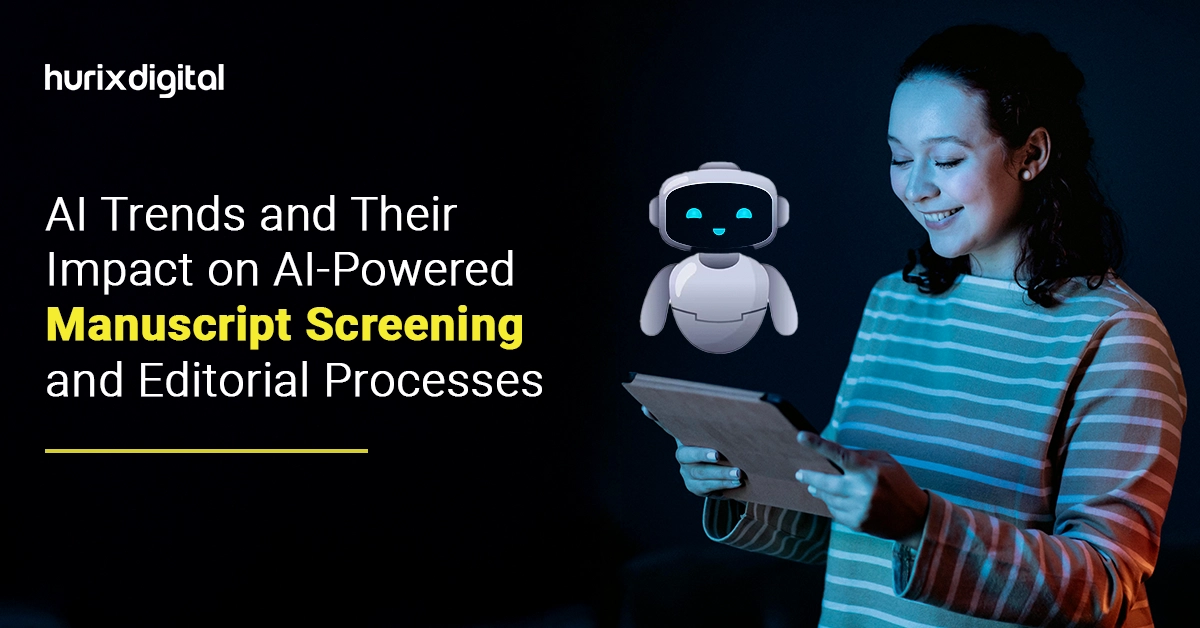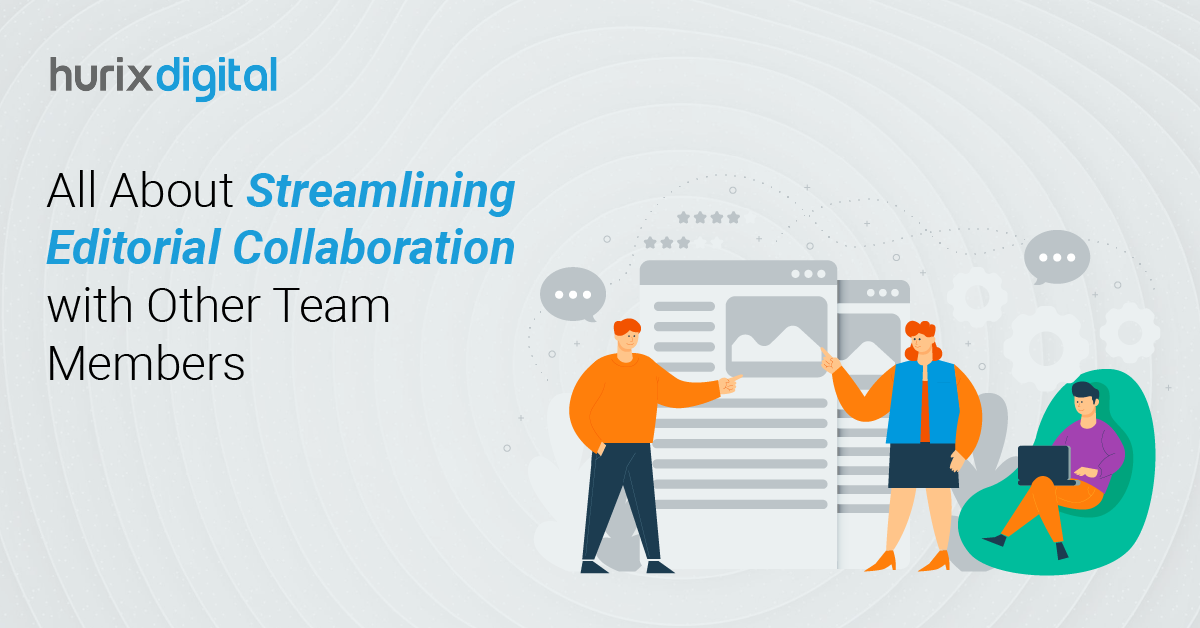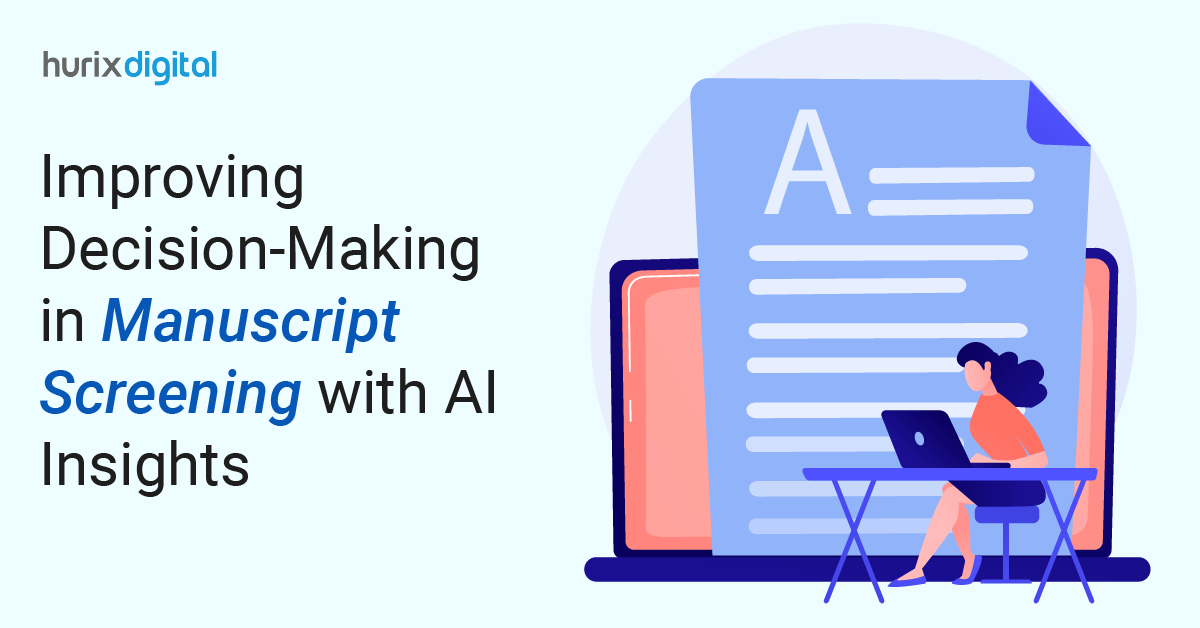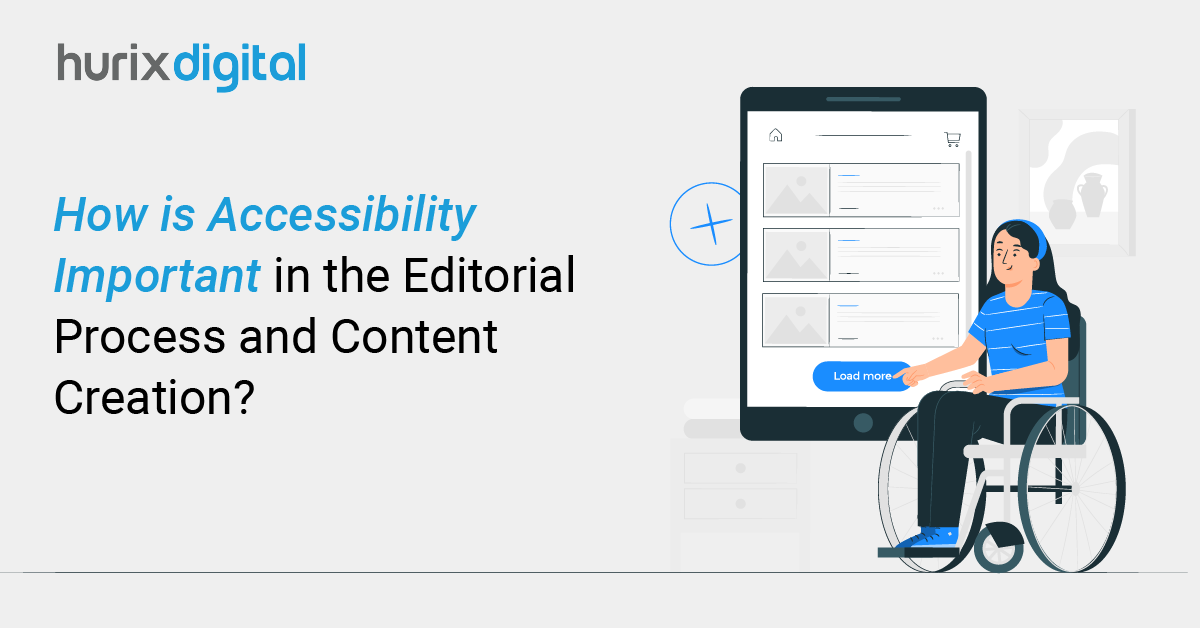
AI Trends and Their Impact on AI-Powered Manuscript Screening and Editorial Processes
Summary
The article examines AI’s role in transforming manuscript screening, expediting evaluation, ensuring transparency, upholding ethics, and reducing publication time, alongside trends like NLP and blockchain.
Artificial Intelligence is transforming various sectors, such as publishing, particularly through its tools in manuscript screening and editing. In 2024, 83.2% of content marketers will rely on AI content generation tools to help drive their content marketing programs.
When considering modern publishing practices, three forms of AI writing—AI text prediction, AI text editors, and AI text generators—greatly influence manuscript screening and editorial practices.
AI is an excellent tool because it helps publishers analyze data quickly, identify trends, and enhance content. Such practices expedite manuscript evaluation and ensure that it is more accurate and transparent than ever. Being an editor requires embracing AI’s full potential while maintaining editorial integrity.
Let us read ahead about the significance and influence of AI-powered manuscript screening and editorial processes.
Table of Contents:
- About Modern Manuscript Screening and Editorial Practices
- Impact of AI on Manuscript Screening and Editorial Practices
- Top AI Trends for Manuscript Screening and Editorial Practices
- Conclusion
About Modern Manuscript Screening and Editorial Practices
Manuscript assessment has undergone major changes with the growth of submissions, various diverse topics of research, and the demand for stricter evaluation standards. With the explosion of global research output, editorship has a huge challenge ahead—that is, to maintain proper quality and consistency within manuscripts in keeping up with the fast pace that is observed in publishing demands.
This is where Artificial Intelligence comes in as the transformative force. Leaning on advancements in machine learning and natural language processing, AI tools can now assist at almost every step of the editorial process. AI promises to streamline editorial workflows while maintaining high standards of quality and integrity.
Also Read: 5 Best Practices to Understand Copyediting Styles and Levels
Impact of AI on Manuscript Screening and Editorial Practices
Here are significant ways through which AI is shaping the future of manuscript screening and editorial practices:
1. Initial Screening
Manuscript screening platforms based on AI can scan for the manuscripts’ compliance with simple requirements. These can be elements like complying with word count, formatting, and relevance of the topic of interest. AI can automatically highlight manuscripts that do not meet the basic requirements, thus aiding editors in effectively working on high-potential submissions.
2. Plagiarism Detection
AI plagiarism detectors have revolutionized the screening game. They can now detect identical content in vast segments of texts. AI software can find identical content across millions of publications. AI allows editors to promptly address ethical problems while upholding the authenticity of published work.
3. Transparency and Explainability
Any research conducted must be transparent, even as AI tools are integrated into the process. The author has to maintain a record of the specifications used in AI algorithms. According to the CONSORT-AI guidelines, authors must be transparent about how AI tools are used while doing the data analysis or content generation, enabling other scientists to reproduce the findings. This level of transparency breeds trust and maintains the integrity of scientific publishing.
4. Ethical Compliance and Data Privacy
AI-Assisted tools support ethical compliance and data privacy by strictly implementing ethical standards. AI helps check for sensitive information within the manuscript and even assists in anonymizing personal data when it is to be presented to the journal. Ethical compliance will not only give credence to the manuscript but will also allow it to open itself to global data protection standards.
5. Promoting Reproducibility
AI makes reproducibility easier by promoting open access. Authors and publishers can make their data public for validation purposes. They can use AI tools to organize and share data within the AI framework, and manuscripts can develop the standard demands of reproducibility. This will raise the value of publishing work in a journal.
6. AI-Backed Insights for Peer Review Streamlining
The peer review process has proved to be of tremendous value using AI as preliminary insights and proposals. For instance, AI quickly frames preliminary manuscript assessments, indicating areas needing improvement. Editors noted that AI is useful as an add-on support that can help them produce an insightful review process.
7. Time-to-Publication
One of the most tangible benefits of AI is the reduction in time-to-publication. The traditional manuscript assessment process is time-consuming, often generating a bottleneck at the editorial level. AI tools can reduce weeks off this process with streamlined labor-intensive checks-from formatting to grammar correction.
According to research, manuscripts that utilized AI-powered tools for screening reduced their average review time and became more responsive to both their authors and readers.
Top AI Trends for Manuscript Screening and Editorial Practices
The following are some of the major trends and cutting-edge technologies driving impactful changes in manuscript screening and editorial processes:
1. Natural Language Processing and Large Language Models
NLP and LLMs are AI tools that transform the way editorial tasks are performed. These technologies help process large volumes of text. When used for certain types of manuscripts, the technology can assist editors in deciding whether the manuscript is clear or ambiguous, of quality or below standard, and relevant or irrelevant. The global growth for natural language is expected to reach approximately USD 48.46 billion by 2026.
NLP models can summarize content, identify inconsistencies, and even suggest edits, thereby saving ample amounts of time in the initial screening and editing phases. They are increasingly being applied in the manuscript assessment process, where they help figure out gaps in the logic behind the document, biased usage of the language, and structural issues.
2. AR and VR
AR and VR are advanced AI tools for reviewing intricate, data-rich papers. AR/VR would be very helpful in explaining 3D models, complex datasets, or simulations presented in the manuscripts, leading to a much more exhaustive review of the research.
3. Internet of Things (IoT)
IoT-enabled devices, widely used in research for data collection, are increasingly becoming a part of the publishing lifecycle. For manuscripts involving real-time data from IoT, publishers can even use IoT verification AI tools to verify data and ensure that it reflects facts.
4. Blockchain for Transparent Manuscript Review and Data Integrity
From the applications of blockchain technology, it is possible to build an editorial process that offers transparency and traceability. The use of blockchain would allow for accuracy checks in manuscript reviews, identification of data manipulation, and blocking of fraudulent change.
5. AI-based Language and Grammar Support
Since most cross-border publishing involves authors whose first language is not English, AI language editing tools facilitate the elimination of vagueness from a manuscript before it is sent up to the editorial board. AI-powered tools help authors and editors refine their language for publication standards. These AI tools identify problems of syntax, tone, and jargon, giving editors and authors opportunities for a more global market.
Also Read: How to Elevate Your Brand with Dynamic Typesetting & Copyediting Mastery?
Conclusion
The introduction of AI in manuscript screening and editorial processes not only speeds up the process but also improves the quality standards, reproducibility, and fairness involved in publishing. AI ensures that editors maintain the required quality standards, give clear assessments, and continue to uphold the ethics of publishing while handling every stage of the editorial workflow with high-value AI-powered tools.
Collaborate with Hurix Digital to use cutting-edge AI-powered manuscript screening, editorial efficiency, and smooth content management. By integrating AI-driven solutions, the brand empowers publishers to streamline operations, reduce manual errors, and ensure a more efficient, transparent, and scalable editorial process.
With us, integrate the best e-assessment platform into your university today.

Vice President – Digital Content Transformation. He is PMP, CSM, and CPACC certified and has 20+ years of experience in Project Management, Delivery Management, and managing the Offshore Development Centre (ODC).






